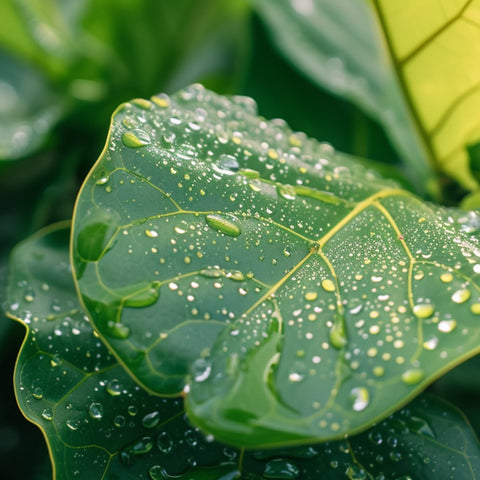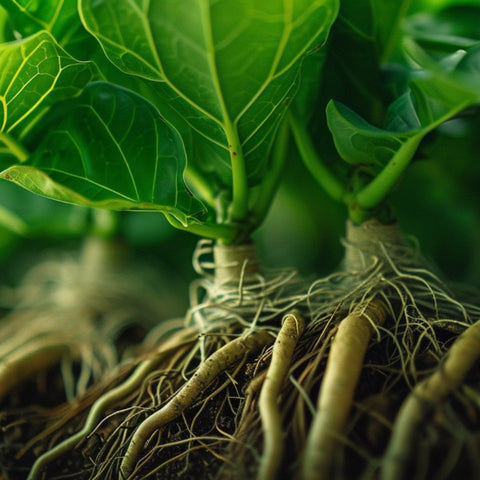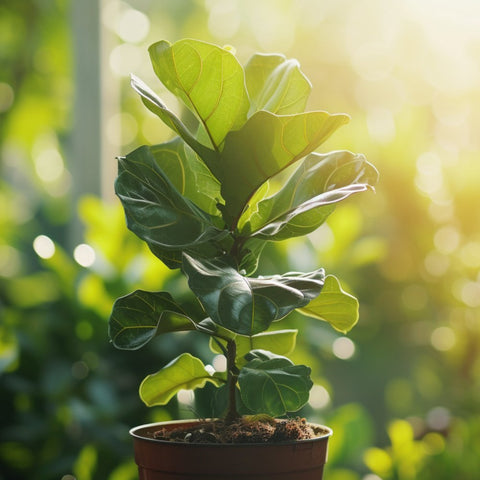Blog Post - Overwatering Fiddle Leaf Fig

If you've ever seen a fiddle leaf fig, you'll understand why it's become one of the most popular indoor plants. With its large, glossy leaves and elegant tree-like appearance, the fiddle leaf fig (Ficus lyrata) adds a touch of sophistication and natural beauty to any space. However, despite its popularity, there are still many misconceptions about how to care for this stunning plant. One of the most common mistakes that plant enthusiasts make is overwatering their fiddle leaf figs, which can lead to a multitude of problems. In this article, we'll delve into the importance of proper watering, signs of overwatering, factors contributing to overwatering, and how to prevent and correct this issue.
The Importance of Proper Watering for Fiddle Leaf Figs
Water is essential for the overall health and well-being of any plant, and the fiddle leaf fig is no exception. Adequate watering ensures that the plant receives the necessary nutrients and moisture to thrive. It helps maintain optimal turgidity, which is the rigidity of the leaves that gives the fiddle leaf fig its distinct upright posture. With proper watering, the plant can efficiently carry out photosynthesis, absorb nutrients, and grow. However, overwatering can have detrimental effects on the fiddle leaf fig, so it's crucial to find the right balance.
Signs of Overwatering in Fiddle Leaf Figs
-
Yellowing or Browning of the Leaves: One of the first signs of overwatering is the appearance of yellow or brown spots on the leaves. This discoloration can spread throughout the foliage and eventually lead to leaf drop if the issue persists.

-
Wilting or Drooping Foliage: Overwatering can cause the roots of the fiddle leaf fig to suffocate, leading to diminished water uptake and wilting of the leaves. If the soil remains consistently waterlogged, the foliage may droop and lose its vitality.

-
Root Rot and Fungi Growth: Excessive moisture in the soil creates an ideal environment for root rot and the growth of harmful fungi. The roots may become mushy, discolored, and emit a foul odor.

-
Stunted Growth and Lack of New Leaves: Overwatering can hinder the growth of new leaves and the overall development of the plant. Instead of producing healthy and vibrant foliage, the fiddle leaf fig may experience stunted growth and limited leaf production.

-
Pests and Insect Infestations: Excessive moisture can attract pests and insects that thrive in damp environments. Common intruders include fungus gnats, aphids, and spider mites, which can further damage the fiddle leaf fig.

Factors Contributing to Overwatering
Several factors contribute to overwatering fiddle leaf figs, including:
-
Lack of Understanding of the Plant's Water Requirements: Many plant enthusiasts tend to water their fiddle leaf figs too frequently or in excessive amounts due to a lack of knowledge regarding the plant's specific water needs.
-
Frequency and Amount of Watering: Overwatering can occur if the plant is watered too often or if the excess water does not have a chance to drain properly.
-
Potting Mix and Drainage Issues: Using a potting mix that does not provide adequate drainage can exacerbate the risk of overwatering. Likewise, using pots without drainage holes can trap excess water and lead to waterlogged roots.
-
Environmental Factors: High humidity and low light conditions can increase the likelihood of overwatering and create an environment where excess moisture lingers in the soil.
Preventing and Correcting Overwatering
To prevent and correct overwatering, consider the following tips:
-
Provide the Right Amount of Water: Familiarize yourself with the fiddle leaf fig's specific water requirements. Water the plant thoroughly but only when the top inch of soil feels dry to the touch.
-
Understand the Plant's Watering Needs Based on Seasons or Growth Phases: The water requirements of a fiddle leaf fig can vary depending on the season or growth phase. During the winter or dormant stage, water sparingly as the plant requires less moisture.
-
Use Well-Draining Soil and Suitable Pots: Choose a well-draining potting mix that allows excess water to flow through. Additionally, opt for pots with drainage holes to prevent water from pooling and suffocating the plant's roots.
-
Implement a Watering Schedule and Monitor the Plant's Response: Set a watering schedule that aligns with the plant's needs and observe how the fiddle leaf fig responds. Adjust the frequency and volume of water as necessary.
-
Techniques for Drying Out an Overwatered Fiddle Leaf Fig: If you suspect your fiddle leaf fig has been overwatered, take immediate action. Provide ample sunlight, withhold water for an extended period, and consider repotting the plant in fresh, well-draining soil.
Don't let overwatering dampen your love for fiddle leaf figs. By understanding the importance of proper watering and taking the necessary precautions, you can ensure the health and vitality of your beloved plant.
In conclusion, proper watering is crucial for the well-being of fiddle leaf figs. Overwatering can lead to adverse effects such as leaf discoloration, wilting foliage, root rot, stunted growth, and pest infestations. By understanding the signs of overwatering, addressing the contributing factors, and implementing preventive measures, you can ensure the optimal health and longevity of your fiddle leaf fig. Remember, a happy fiddle leaf fig is a vibrant addition to your indoor oasis.
For additional resources and tips on fiddle leaf fig care, check out our blog, where we delve deeper into the world of plant care, sharing expert advice and insights. Happy watering and happy growing!






























Comments (0)
There are no comments for this article. Be the first one to leave a message!